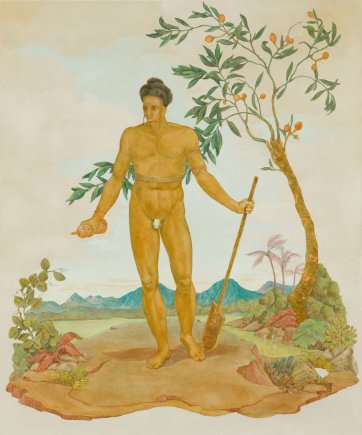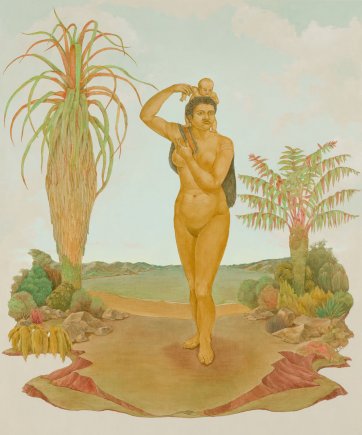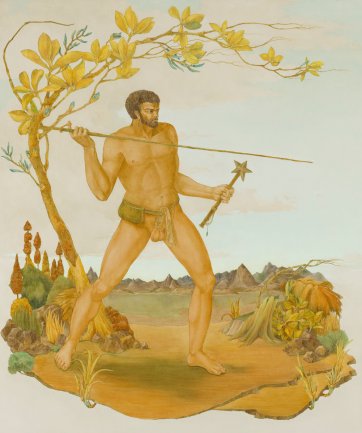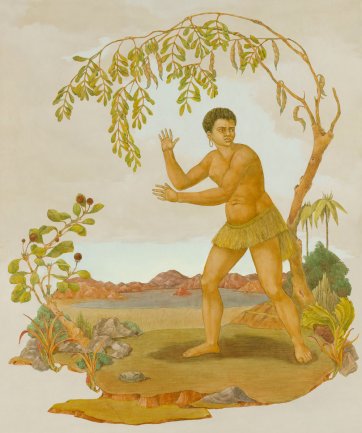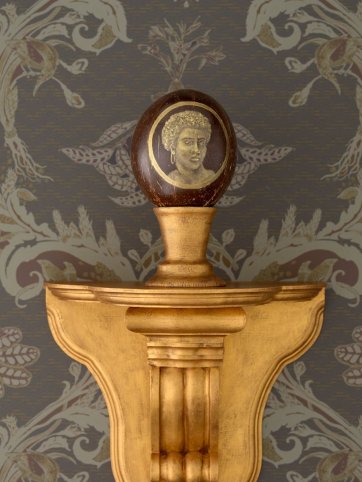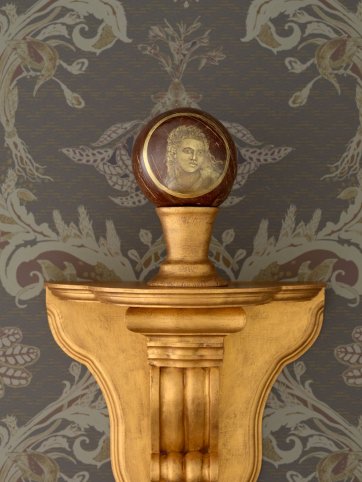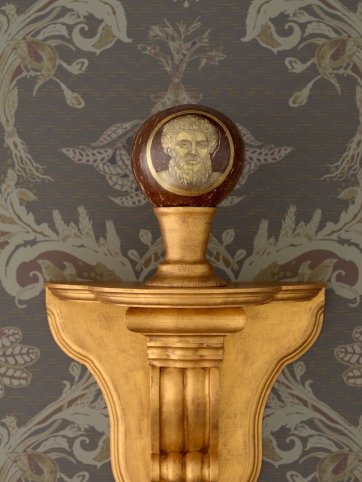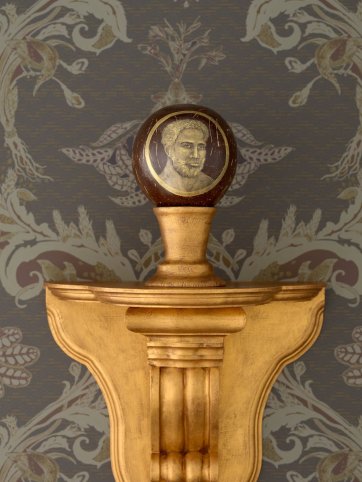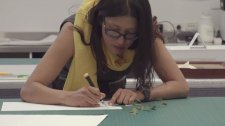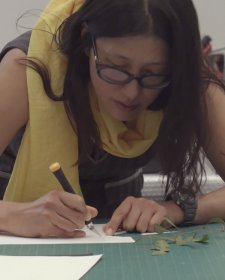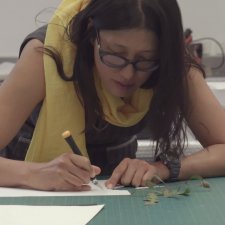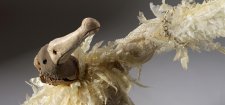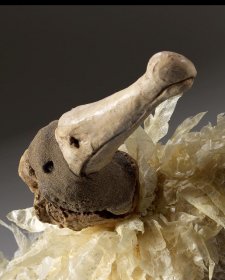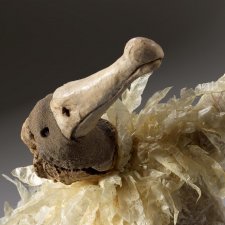Artist statement
This body of work springs from my long-standing fascination with the engravings in the atlas published by naturalist Jacques Julien Houtou de La Billardière in 1800. The atlas illustrated his journal account of the French voyage commanded by Bruni d’Entrecasteaux, launched in 1791 to search the South Seas for the lost vessels of La Pérouse. Most of the engravings – depicting plants, birds, people and events – are derived from the drawings of the expedition artist, Jean Piron.
Both Piron’s drawings and La Billardière’s journal words fuelled my imagination, whilst my research work gave me an understanding of the emotive nature of encounters between Europeans and indigenous peoples. I have envisaged and rendered these volatile meetings of bodies and minds, driven as they were by divergent needs and desires.
1 Presenting Jean Piron, 1792 - Sauvage des îles de l'Amirauté, 2018. 2 Presenting Jean Piron, 1793 - Femme du Cap de Diemen, 2018. Both by Nicola Dickson.
To provide a feeling of the sensory 'strangeness' of the encounters with people and place that Piron documented, I have re-presented the historical image in a different medium, while transforming it with various decorative forms. Imagery contemporaneous with Piron’s time alludes to the aesthetic lens through which he witnessed events, a reference to the fact that understandings of distant people – of ‘others’ – were, and still are, influenced by prevailing cultural values.
1 Presenting Jean Piron, 1792 - Sauvage de la Nouvelle Calédonie, 2018. 2 Presenting Jean Piron, 1793 - Femme de la Nouvelle Calédonie, 2018. Both by Nicola Dickson.
The sensory bombardment the voyagers must have experienced in each location is conveyed by my use of wallpaper. Its arching framework, composed of details of engravings of plants and birds that La Billardière published, rests on a background of Tongan patterning. The wallpaper pattern is broken irregularly with images of Islander and European weapons. On the wallpaper hangs a series of paintings, some on traditional linen, and others on polished coconuts. The four full-length portraits depict people from New Caledonia, the Admiralty Islands and Tasmania.
Representing these individuals as classicised figures enabled Piron to respectfully convey a sense of their agency. While preserving their personal presence in my paintings, I have presented these people in imaginary surrounds, based on the idealised landscape vignettes that adorned French Sèvres ceramics. To convey the impact of awareness of past events on the experience of place, I used the same strategy in my panoramic painting of Fluted Cape, Bruny Island, Tasmania – a location that the d'Entrecasteaux expedition visited. The portraits painted on polished coconuts, and the handwritten list of French and Tongan words transformed into hide, tapa cloth and wool, emphasise how the desire to exchange materials motivated all sides to engage in encounters.


